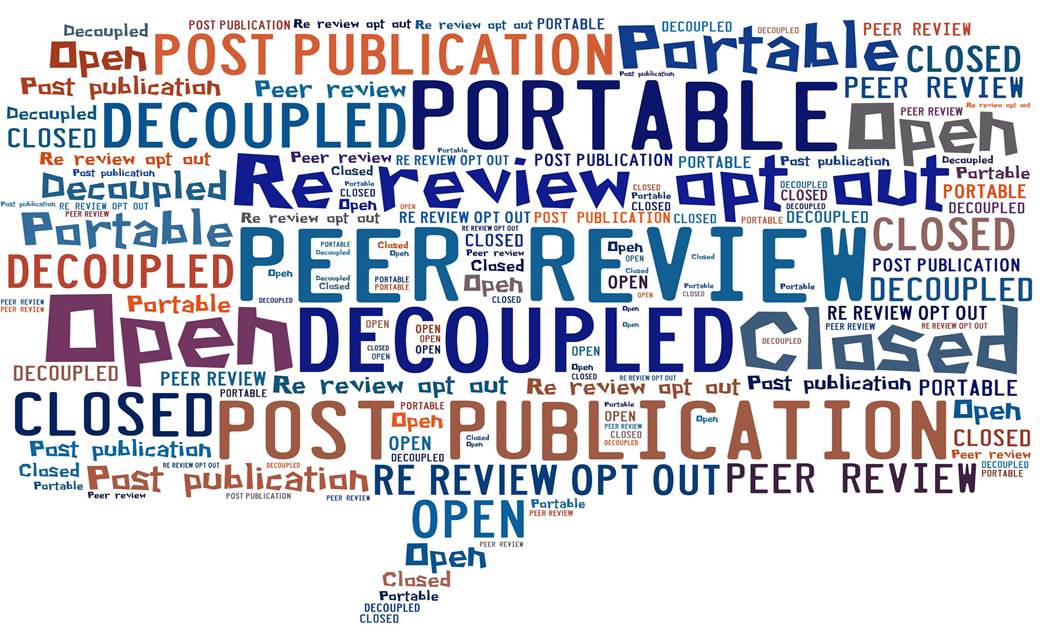Join the BioMed Central Editors on Twitter tomorrow to talk about some of the innovations taking place in peer review…
 Innovation may not be an adjective often associated with peer review, indeed commentators have claimed that peer review slows innovation and creativity in science. Preconceptions aside, publishers are attempting to shake things up a little, with various innovations in peer review, and these are the focus of a panel discussion at BioMed Central’s Editors’ Conference on Wednesday 23 April in Doha, Qatar. This follows our spirited discussion at the Experimental Biology conference in Boston last year.
Innovation may not be an adjective often associated with peer review, indeed commentators have claimed that peer review slows innovation and creativity in science. Preconceptions aside, publishers are attempting to shake things up a little, with various innovations in peer review, and these are the focus of a panel discussion at BioMed Central’s Editors’ Conference on Wednesday 23 April in Doha, Qatar. This follows our spirited discussion at the Experimental Biology conference in Boston last year.
The discussion last year focussed on the limitations of the traditional peer review model (you can see a video here). This year we want to talk about innovations in the field and the ways in which the limitations are being addressed. Specifically, we will focus on open peer review, portable peer review – in which we help authors transfer their manuscript, often with reviewers’ reports, to a more appropriate journal – and decoupled peer review, which is undertaken by a company or organisation independent of, or on contract from, a journal.
Leading us through the discussion will be our expert panellists – James du Preez, joint Editor-in-Chief of Biotechnology for Biofuels, David Liberles, Section Editor on BMC Evolutionary Biology, and Rosemary Tannock, co-Editor-in-Chief for Behavioral and Brain Functions.
We will be live tweeting from the session at 11.15am local time (9.15am BST), so if you want to join the discussion or put questions to our panellists, please follow #BMCEds14. If you want to brush up on any or all of the models that we’ll be discussing, have a look at some of the content from around BioMed Central’s journals, blogs and Biome below:
– Greg Petsko’s frustrations with the current system of peer review, which “sometimes seems to reflect all the civility of being thrown to the lions in the Coliseum”: Caustic volleys and the sting of peer review: what’s the solution?
– Biology Direct editorial celebrating seven years of open, published peer review: Biology Direct: celebrating 7 years of open, published peer review
– GigaScience’s rationale for rationale for undertaking a policy of open peer review and examples of our positive experiences, plus a call to arms for others to open up opaque publication processes: Peering into peer-review at GigaScience
– Laurie Goodman, Editor-in-Chief of GigaScience on an extremely open peer review experience: Read her blog: Ultra open peer review, and watch her discuss the experience: Assemblathon 2: Unusual ‘meta’ peer review
– Portability of peer review discussed: BioMed Central – a home for all research
– Portable peer review between publishers, blogs by BMC Biology: Peer review – eLife goes portable and the BMC Series: Portable peer-review to prevent a pillar-to-post process
– Some BioMed Central journals welcome manuscripts that have been reviewed through the community peer-review initiative Peerage of Science. Blog: Supporting a new way to peer-review, Biome interview with co-founder of Peerage of Science: Progress in peer review: Janne-Tuomas Seppänen discusses Peerage of Science, and an author’s experience: A new take on peer review – an author experience of Peerage of Science
It’s clear from the above and the many discussions continuing to take place about peer review, that there’s an eagerness for innovation and for changes to the traditional system. So make sure you share your own thoughts on what these changes could and should be by joining us tomorrow on Twitter #BMCEds14, or if you can’t make it, leave a comment below.
3 Comments